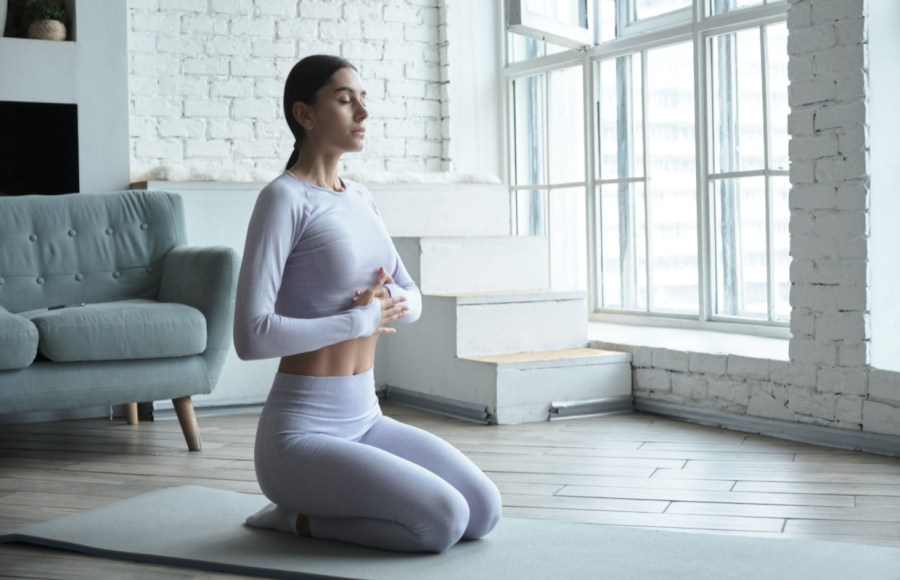Learn how to do the lateral breathing technique during your Pilates workouts with this helpful guide…
One of the key principles of Pilates is the breath. In an ideal world, we’d all breath fully into our abdomen with relaxed shoulders. Watch a baby breathe for a lesson in how we should do it properly!
Unfortunately stress, poor posture and bad habits mean that, more often than not, we take shallow breaths into our upper chest, tensing our shoulders and increasing general feelings of stress.
Controlling and maximising your breath will not only help you perform your Pilates moves more fully, it will also boost your wellbeing and aid relaxation.
Importance of the exhale in Pilates
In basic Pilates, we use the exhale breath for most of our movements – remember to Exhale on the Exertion or Effort –because this helps our deep core muscles to activate and power each move.
When exhaling, your body is trying to squeeze out the air, reducing the volume of the lungs and thereby the size of the ‘container’ – your ribs and tummy.
Try this: Stand up, place your hands on your stomach and take a deep breath in, relaxing your abs. Now blow out through pursed lips and keep blowing out ALL the air. You should feel your deep abs tighten and draw in as they try to expel the air. The same thing happens when
you cough. Your abs contract to force the air out of your lungs.
We want to use this natural ‘flattening’ or ‘tightening’ of the abs as we exercise because this will protect and support our spine and help to build a natural girdle or corset of strength.
Benefits of lateral breathing technique in Pilates
- Helps to relax your muscles and ease tension
- Encourages effective oxygenation of the blood.
- Encourages the engagement of the deep transversus abdominis muscle
- Improves posture
- Supports good movement patterns
- Focuses the mind
What is lateral thoracic breathing in Pilates?
For Pilates exercises, we use lateral thoracic breathing or sideways rib breathing. This means taking your breath into the sides of your rib cage, keeping your shoulders relaxed and your core gently engaged.
This type of breathing enables you to perform the exercises while keeping your core gently engaged. If you inhale into your stomach while performing an exercise, your tummy muscles will expand, meaning that you’ll lose your navel to spine contraction. See the diagrams below on how to do this.
How to do lateral breathing technique in Pilates
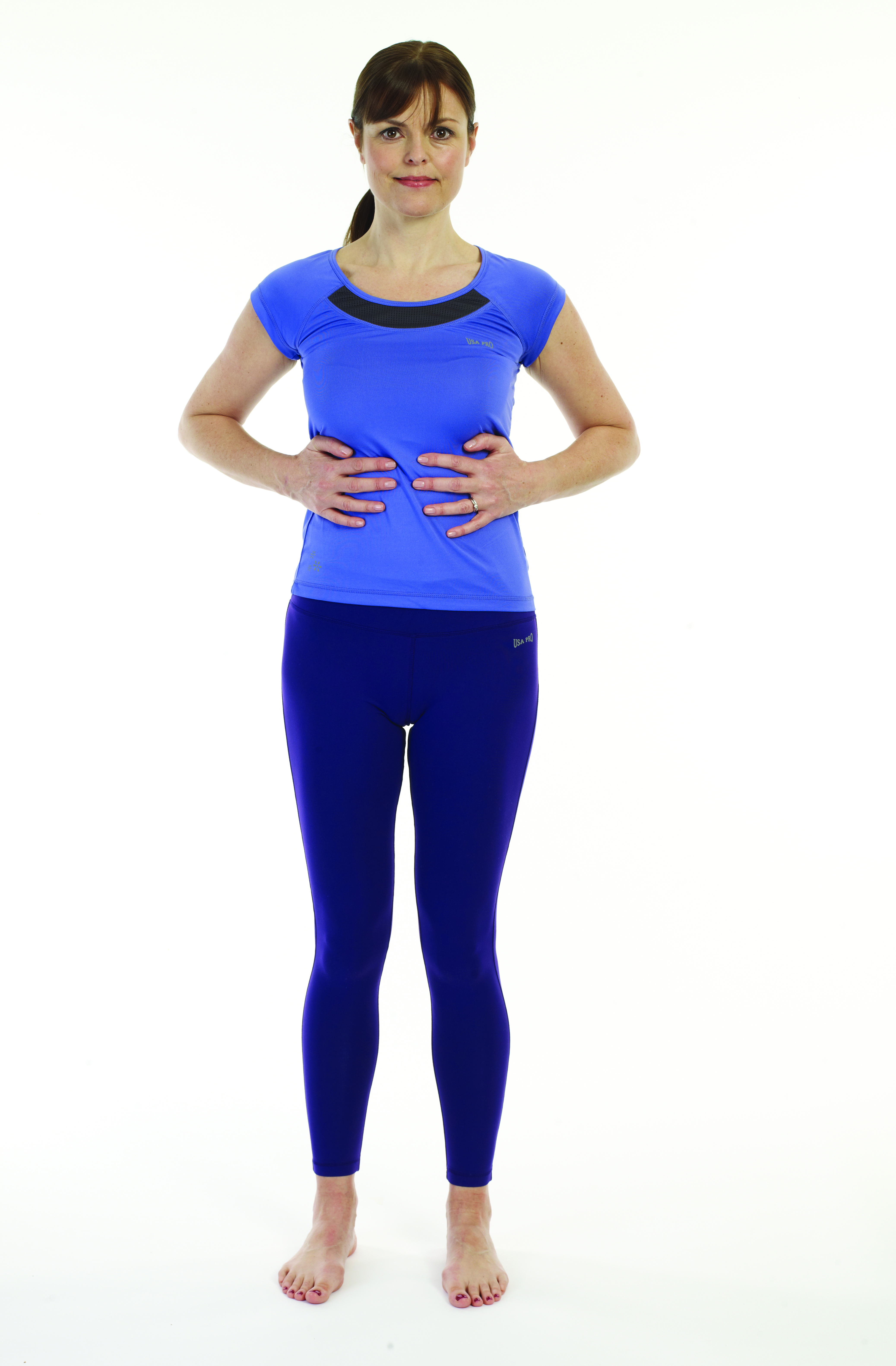
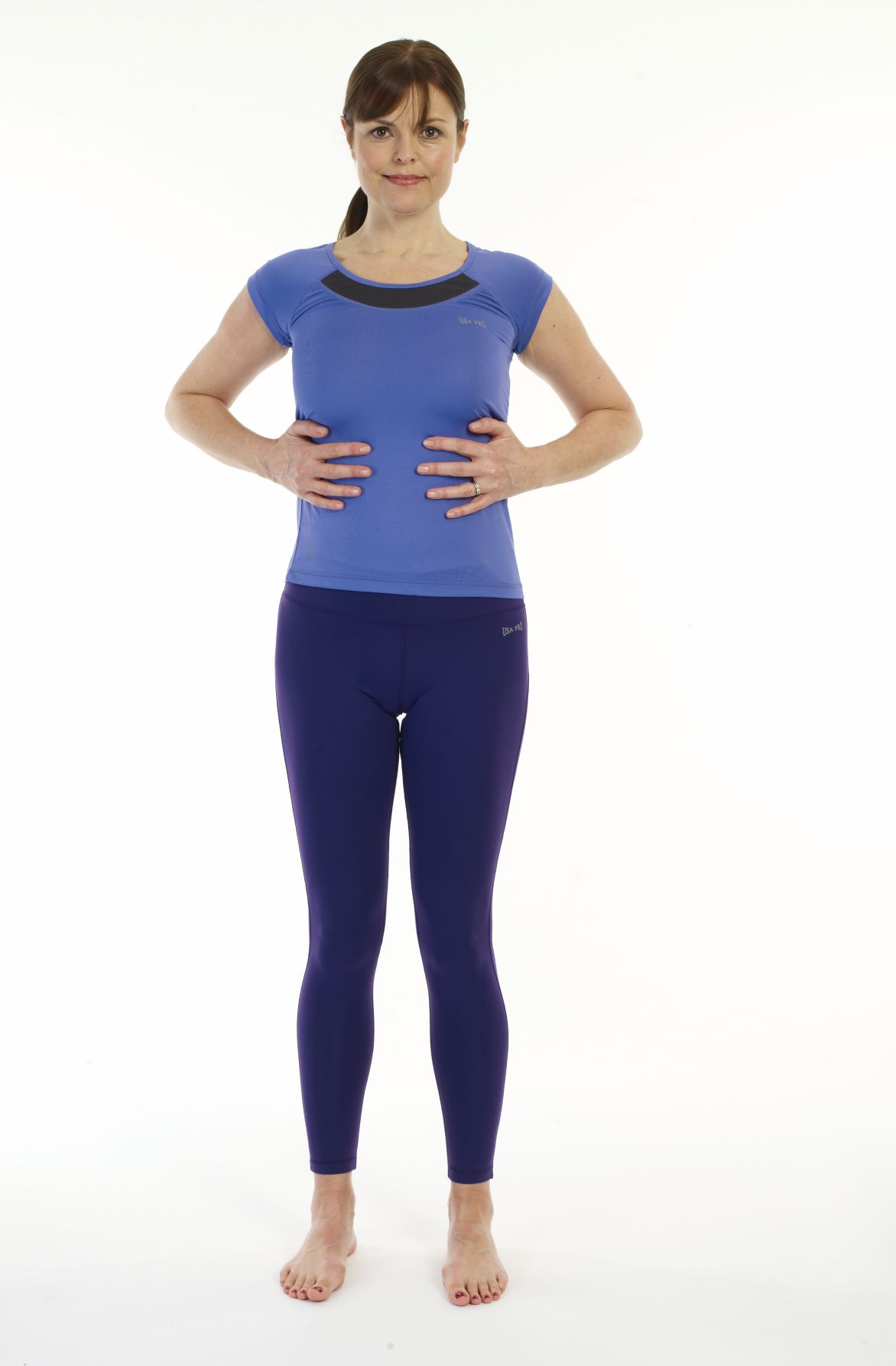
- Place your hands on to your rib cage with your fingertips just touching (A)
- Take a deep breath in and feel your ribs expand out to the side – like an umbrella opening – pushing your fingertips apart (B).
- Repeat several breaths while keeping your shoulders relaxed and navel gently drawn in to your spine.
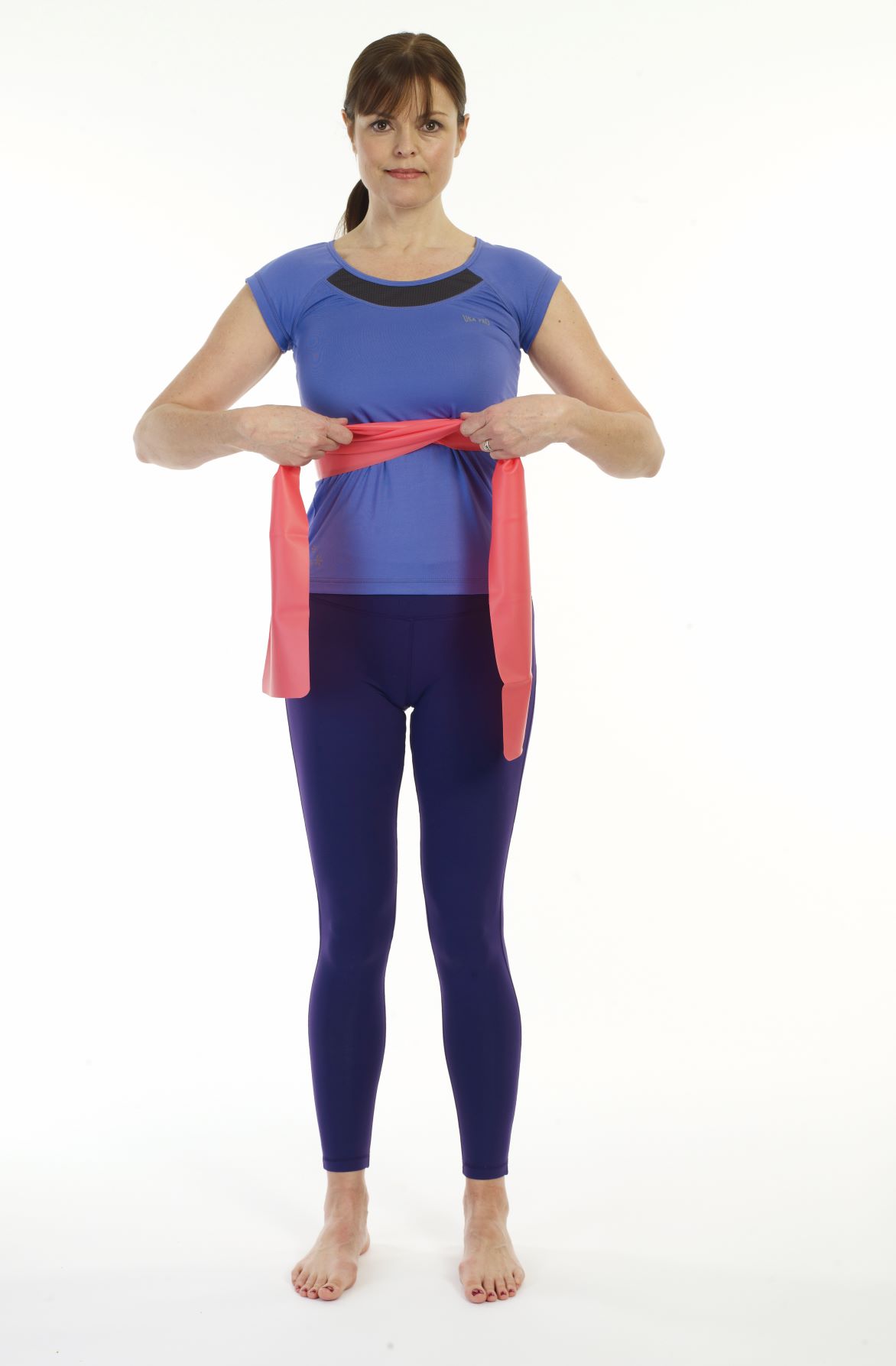
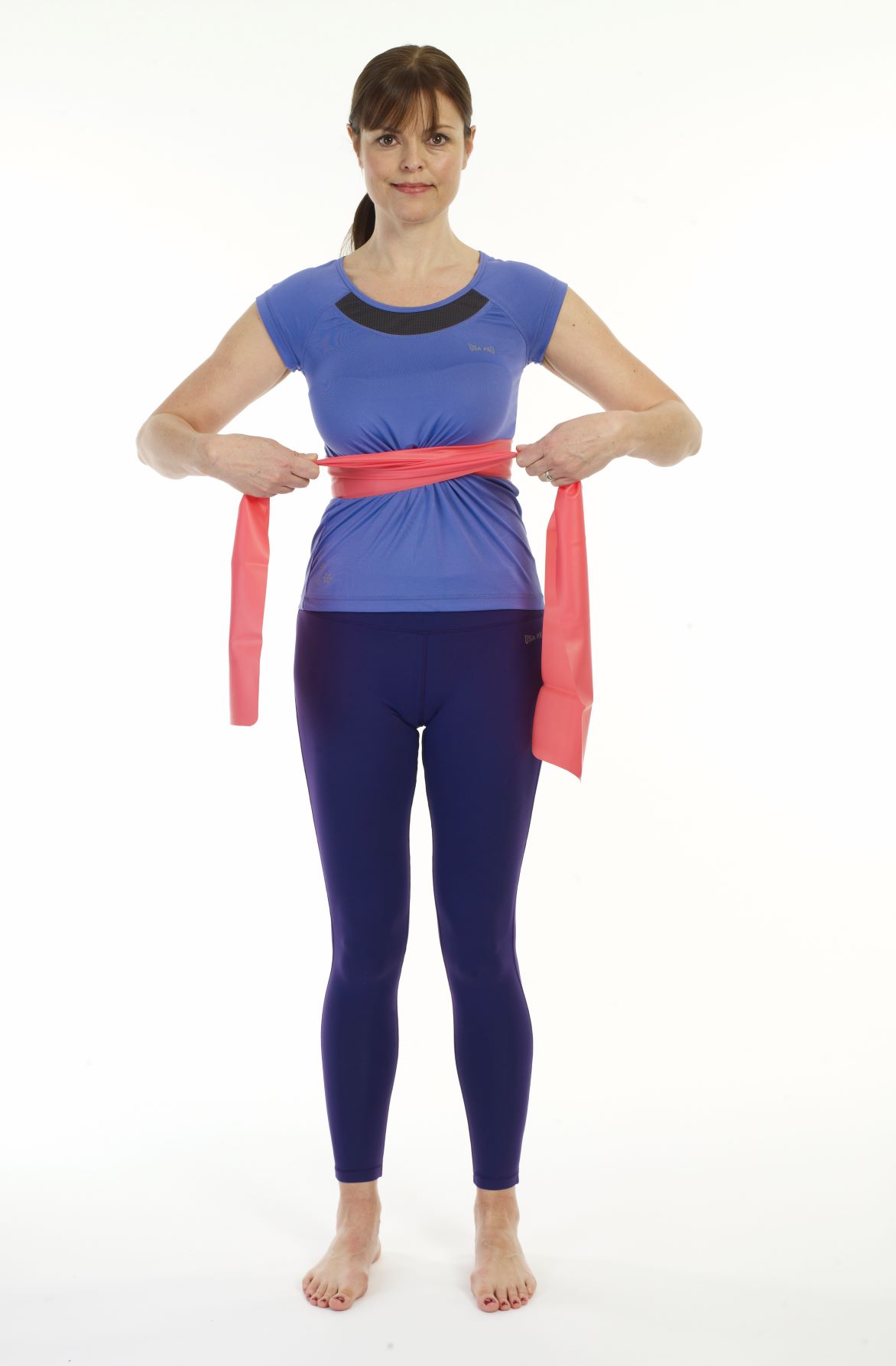
Up the intensity:
- Now increase the intensity by wrapping a flex band tightly around your ribs. Cross the ends over each other and hold as shown (A).
- Inhale and expand your ribs sideways against the resistance of the band (B).
- Repeat several breaths while keeping your shoulders relaxed and navel gently drawn towards your spine.
How to do Pilates lateral breathing technique when lying down:
Here’s how to employ the Pilates breath when you’re doing floor exercises.
- Lie on your back with your knees bent, feet and knees hip-width apart and your shoulders relaxed.
- Take a deep breath in and then ‘sigh’ out to release any tension.
- Allow your body to melt into the mat. Try to relax your rib cage and sacrum – back of your pelvis – on to the mat.
- Relax your shoulders and neck and feel that your collar bones are wide and flat.
- Inhale and imagine your rib cage expanding without allowing your back to arch or your ribs to lift off the mat, and keeping your shoulders relaxed.
- Breathe in through your nose and out through your mouth. Slightly pursing your lips can help you to engage your core.
- Take several breaths in this way and, when you are comfortable, try the breathing while keeping a gentle contraction of navel to spine.

